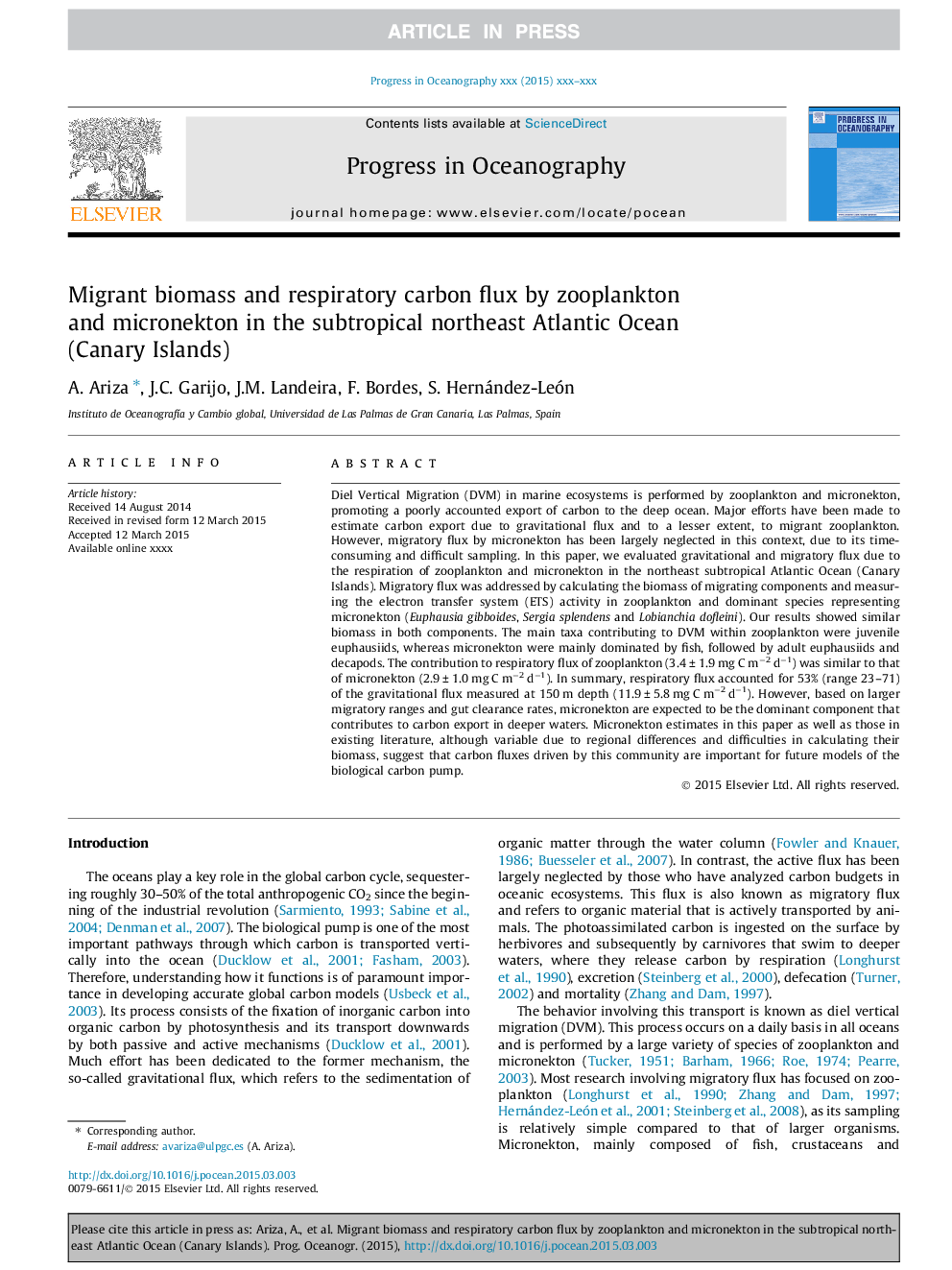| کد مقاله | کد نشریه | سال انتشار | مقاله انگلیسی | نسخه تمام متن |
|---|---|---|---|---|
| 6388591 | 1627922 | 2015 | 13 صفحه PDF | دانلود رایگان |
عنوان انگلیسی مقاله ISI
Migrant biomass and respiratory carbon flux by zooplankton and micronekton in the subtropical northeast Atlantic Ocean (Canary Islands)
ترجمه فارسی عنوان
زیست توده مهاجر و شار کربن تنفسی توسط زئوپلانکتون و میکرونکتون در شمال شرقی اقیانوس اطلس (جزایر قناری)
دانلود مقاله + سفارش ترجمه
دانلود مقاله ISI انگلیسی
رایگان برای ایرانیان
موضوعات مرتبط
مهندسی و علوم پایه
علوم زمین و سیارات
زمین شناسی
چکیده انگلیسی
Diel Vertical Migration (DVM) in marine ecosystems is performed by zooplankton and micronekton, promoting a poorly accounted export of carbon to the deep ocean. Major efforts have been made to estimate carbon export due to gravitational flux and to a lesser extent, to migrant zooplankton. However, migratory flux by micronekton has been largely neglected in this context, due to its time-consuming and difficult sampling. In this paper, we evaluated gravitational and migratory flux due to the respiration of zooplankton and micronekton in the northeast subtropical Atlantic Ocean (Canary Islands). Migratory flux was addressed by calculating the biomass of migrating components and measuring the electron transfer system (ETS) activity in zooplankton and dominant species representing micronekton (Euphausia gibboides, Sergia splendens and Lobianchia dofleini). Our results showed similar biomass in both components. The main taxa contributing to DVM within zooplankton were juvenile euphausiids, whereas micronekton were mainly dominated by fish, followed by adult euphausiids and decapods. The contribution to respiratory flux of zooplankton (3.4 ± 1.9 mg C mâ2 dâ1) was similar to that of micronekton (2.9 ± 1.0 mg C mâ2 dâ1). In summary, respiratory flux accounted for 53% (range 23-71) of the gravitational flux measured at 150 m depth (11.9 ± 5.8 mg C mâ2 dâ1). However, based on larger migratory ranges and gut clearance rates, micronekton are expected to be the dominant component that contributes to carbon export in deeper waters. Micronekton estimates in this paper as well as those in existing literature, although variable due to regional differences and difficulties in calculating their biomass, suggest that carbon fluxes driven by this community are important for future models of the biological carbon pump.
ناشر
Database: Elsevier - ScienceDirect (ساینس دایرکت)
Journal: Progress in Oceanography - Volume 134, May 2015, Pages 330-342
Journal: Progress in Oceanography - Volume 134, May 2015, Pages 330-342
نویسندگان
A. Ariza, J.C. Garijo, J.M. Landeira, F. Bordes, S. Hernández-León,
